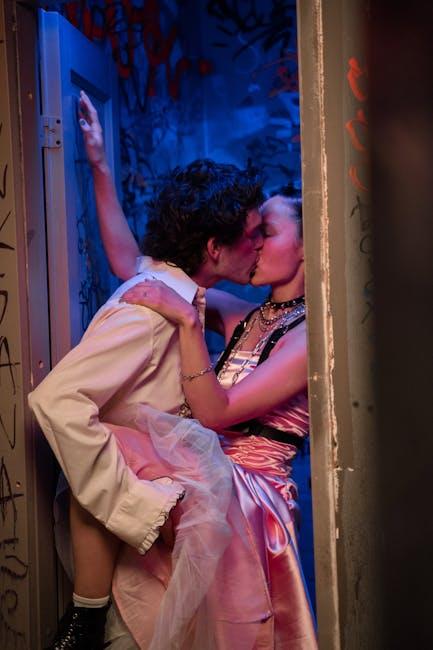In the ever-evolving landscape of cinema, where technological advancements and shifting cultural paradigms continually reshape the industry, there exists a select pantheon of films that transcend the ephemeral nature of trends. These are the timeless masterpieces, cinematic lodestars that have etched their narratives into the collective consciousness and continue to inspire generations of filmmakers. Like beacons in a vast sea of celluloid, they illuminate the path for storytellers seeking to capture the human experience in its most profound and visceral form. From the pioneering genius of early auteurs to the audacious visionaries of the modern era, these films serve as both muse and mentor, reminding us that while the tools of the trade may change, the art of storytelling remains eternal. Join us as we explore the indelible impact of these iconic works and uncover the enduring lessons they impart to those who dare to dream behind the camera.
Cinematic Masterpieces Shaping the Art of Filmmaking
The world of cinema is a treasure trove of iconic films that have not only captivated audiences but also reshaped the landscape of filmmaking. These timeless classics serve as both a benchmark and a beacon for aspiring filmmakers, guiding them with their innovative storytelling and groundbreaking techniques. From the stark, haunting beauty of Orson Welles’ Citizen Kane to the rich, imaginative world of Hayao Miyazaki’s Spirited Away, these films continue to offer invaluable lessons in narrative construction and visual artistry.
- The Godfather (1972) – A masterclass in character development and atmospheric tension, this epic saga delves into the complexities of power and family.
- Pulp Fiction (1994) – Quentin Tarantino’s nonlinear narrative and eclectic dialogue broke conventional storytelling, offering a fresh perspective on character arcs and pacing.
- 2001: A Space Odyssey (1968) – Stanley Kubrick’s visionary work redefined visual storytelling with its pioneering special effects and philosophical depth.
- Schindler’s List (1993) – Steven Spielberg’s poignant portrayal of human resilience amidst tragedy, underscored by its haunting monochrome cinematography, remains a staple in emotional storytelling.
These films have not only stood the test of time but continue to inspire a new generation of filmmakers to push the boundaries of what cinema can achieve. Each serves as a reminder of the power of film as an art form, where imagination meets innovation to craft stories that resonate across generations.

Enduring Narratives and Their Influence on Modern Storytelling
Throughout cinematic history, certain films have transcended their time, offering enduring narratives that continue to shape the craft of storytelling. These timeless classics not only entertain but also serve as a rich source of inspiration for filmmakers across generations. Their influence can be seen in the themes, techniques, and characters that populate modern cinema, creating a tapestry of interwoven narratives that echo through the ages. Classic films like Casablanca, with its unforgettable romance and moral dilemmas, or The Godfather, with its intricate portrayal of family and power, have left indelible marks on the art of filmmaking. Their storytelling techniques, such as non-linear narratives and complex character development, are frequently emulated by contemporary directors seeking to capture the same depth and engagement.
- Innovative Techniques: Many modern films borrow from the visual and narrative innovations of classics, such as the use of montage or the exploration of moral ambiguity.
- Thematic Resonance: Timeless films often tackle universal themes—love, identity, sacrifice—that remain relevant, providing a rich well of material for new interpretations.
- Character Archetypes: Iconic characters from these films have become archetypes, serving as templates for new stories and fresh perspectives.
In the evolving landscape of cinema, these films act as guiding stars, reminding filmmakers of the power of storytelling that transcends time and culture. By studying and reimagining these narratives, contemporary storytellers continue to innovate while paying homage to the masters who came before them.

Visual Innovations That Redefined Cinematic Techniques
Throughout the history of cinema, certain films have pioneered visual techniques that have forever altered the landscape of filmmaking. These innovations not only challenged the status quo but also expanded the boundaries of storytelling, influencing countless filmmakers. “Citizen Kane” by Orson Welles is often heralded for its groundbreaking use of deep focus and innovative camera angles, allowing for complex narratives to unfold within a single frame. Similarly, “The Matrix” introduced the world to bullet-time photography, a technique that redefined action sequences and visual storytelling, offering audiences a never-before-seen perspective on cinematic action.
- Deep Focus Cinematography: Enabled directors to explore layered storytelling.
- Bullet-Time Photography: Revolutionized action filmmaking by manipulating time and space.
- CGI and Motion Capture: Films like “Avatar” showcased the potential of blending reality with digital art.
These visual breakthroughs have set new standards and have become essential tools in the filmmaker’s arsenal, ensuring that cinema continues to evolve and captivate audiences worldwide.

Essential Viewing for Aspiring Directors and Cinematographers
For those stepping into the world of directing and cinematography, certain films serve as beacons of innovation and artistry. These masterpieces not only revolutionized the industry in their time but continue to serve as invaluable learning tools for the new generation. “Citizen Kane” remains a cornerstone in cinematic storytelling, its pioneering techniques in deep focus and non-linear narrative offering a masterclass in creative visual storytelling. “2001: A Space Odyssey”, with its breathtaking visual effects and philosophical depth, challenges aspiring filmmakers to push the boundaries of imagination and technical execution.
To truly grasp the power of visual storytelling, consider studying the following films, each a testament to the directors’ and cinematographers’ visionary skills:
- “The Godfather” – A showcase of lighting and composition that underscores the film’s intense emotional and moral complexities.
- “Pulp Fiction” – A brilliant example of nonlinear storytelling and eclectic cinematographic style that redefined modern filmmaking.
- “Blade Runner” – Known for its atmospheric lighting and futuristic set design, this film offers lessons in creating immersive worlds.
- “In the Mood for Love” – A lesson in the use of color, framing, and music to convey mood and emotion with subtlety and grace.
These films not only tell compelling stories but also demonstrate the power of visual language, urging aspiring directors and cinematographers to experiment and innovate in their own unique ways.




